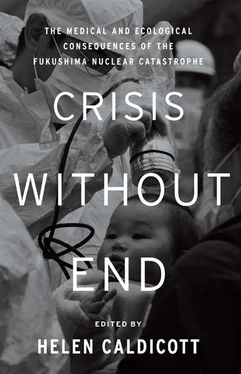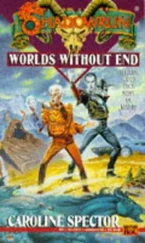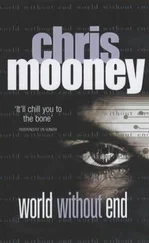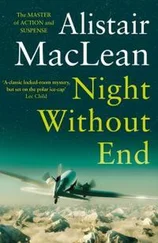18
Cancer Risk from Exposure to Low Levels of Ionizing Radiation
Herbert Abrams
The BEIR committee of the National Research Council published a report in 2006 that represented the latest in a series begun in 1972. Its aim was to convey the level of risk of low-level ionizing radiation. The report was widely accepted as a primary source of data for radiation risk estimates.
BACKGROUND
From the beginning of the twentieth century, not long after the discovery of radium and X-rays, it has been apparent that radiation has dual uses: it can cure cancer, and it can cause cancer. The harmful effects of large and medium doses have been amply demonstrated, but the effects of low-level ionizing radiation have been a subject of considerable controversy.
The Radiation Effects Research Foundation (RERF), formerly named the Atomic Bomb Casualty Commission, was founded in Hiroshima in 1947 in the wake of the atomic bombings of Hiroshima and Nagasaki. Its purpose is to document and understand the long-term effects of radiation exposure, and to that end, it employs about four hundred scientists working on many projects related to radiation. Its support comes from both the Japanese and the U.S. governments.
The foundation’s Life Span Study, following 120,000 survivors in Hiroshima and Nagasaki, and its more detailed Adult Health Study, following 20,000 survivors, have continued for sixty-seven years. These projects are unique epidemiologic achievements, and they provide powerful evidence for evaluating cancer risk from radiation. The survivors in the Life Span Study are widely distributed by age. In 1995, 44,000 were still alive, and it is estimated that by 2020, 14,000 will be alive. All of them were under the age of twenty when they were exposed.
Beyond the RERF longitudinal database, there have been large numbers of research projects on subcellular elements, cells, animals, and humans addressing the biological effects of radiation and the mechanism of its effects.
COMPOSITION OF THE BEIR VII COMMITTEE OF THE NATIONAL RESEARCH COUNCIL
The sixteen-member advisory committee, of which I was a member, was appointed in 1999, and it worked together over a period of six years. The experts on the committee were drawn from five different countries and from different disciplines: epidemiology, genetics, radiology, physics, cancer biology, radiation biology, biostatistics, science, and risk communication.
PROCESS
There were many witnesses from interested and informed groups. As universities and governmental organizations (such as the EPA, NRC, and DOE), industry groups, NGOs, and activists took center stage, the atmosphere in the hearings sometimes became confrontational. Passions ran high because the stakes were high. If the report affected policy, larger risk estimates and lower permissible doses might follow. With lower estimates, there might be a relaxation of protection standards. Extensive reviews of the available literature were undertaken, and conflicting data were reconciled to the extent possible.
WHAT IS “LOW-LEVEL” IONIZING RADIATION?
The issue is complicated by many differing definitions. I have noted nineteen different estimates—all of them in refereed journals and with “low-level radiation” in the title—that encompass a range from 3,000 millisieverts down to 20 millisieverts. The committee came up with its own definition: a range from near zero to 100 millisieverts.
The committee’s accepted definition of 100 millisieverts or less is about thirty to forty times the annual background radiation of 3 millisieverts that all of us are exposed to, ten times the level of a CAT scan, and a thousand times that of a chest X-ray. Approximately 65 percent of atomic bomb survivors received a low dose by our definition.
WHERE DOES THE RADIATION COME FROM?
Most of the radiation that we are exposed to comes from our natural background. Building materials, air, food, outer space, and Earth are major sources—especially of radon gas—and comprise 82 percent of human exposure. Roughly 18 percent is man-made, derived from medical X-rays (58 percent), nuclear medicine (21 percent), and consumer products, such as tobacco (16 percent). Two percent comes from nuclear fallout and 1 percent from the nuclear fuel cycle.
Over 300 million medical X-rays and over 120 million dental X-rays are performed every year. Together with CAT scans, which have contributed to higher-dose diagnostic examinations, the average annual effective dose is 0.5 millisieverts. Some exposures are higher, such as X-rays of the lower gastrointestinal tract, angiography, or interventional radiology. These range up to a level of 8 millisieverts.
The concern with CAT scans is their sequential use, especially in young people, because doses are cumulative. When performed repetitively over a number of years, they can increase the risk of cancer mortality. Radio-isotope exams are also common sources of relatively high doses.
WHAT WAS LEARNED FROM BEIR VII?
While the report covers many areas, the data support the presence of an increased risk of developing radiation cancer with increased exposure at low levels. The risk estimates are generally consistent with those documented in BEIR V .
Radiation damages DNA, causing single- and double-strand breaks and oxidative changes in the nucleotide bases. The DNA deletions and the gene and chromosome damage may be involved in the initiation of the neoplastic process. There is no evidence of a threshold below which no cellular damage occurs.
Significant excess relative risks have been determined for twelve cancers, including lung, liver, breast, prostate, stomach, colon, and thyroid cancer, as well as leukemia. The excess risk of breast cancer is almost 100 percent but for others it is above the 50 percent level.
The number of excess cases of cancer per 100,000 individuals exposed to 100 millisieverts at the age of 30 who have attained the age of 60 was estimated to be 800 in males and 1,300 in females. This is a relatively small but significant number compared with the natural incidence of solid tumors in an unexposed population.
Since this report, the results of a number of important epidemiological studies have been published. Among the 446,000 nuclear workers studied in fifteen countries in 2006, there was evidence of a 1 to 2 percent increase in levels of cancer deaths. The Techa River study is an example of the effects of a contaminated body of water, full of the waste from the Mayak nuclear weapons production center, which caused a 3 percent increase in cancer risk. A British study of 175,000 nuclear workers found that protracted radiation exposure caused higher risk. A post-2002 combination of twelve epidemiologic studies also confirmed BEIR VII ’s conclusions.
There are countervailing approaches, such as hormesis, which suggest a beneficial effect at low doses. Interest in “the bystander effect,” adaptive response, and genomic instability has been intense. The data from high-background areas in India and China have been considered by some as neutralizing the support for low-level radiation effects. All these considerations were reviewed and analyzed by the committee but were not convincing.
The one opinion that everyone shares is that we are dealing with uncertainties in this area.
Gender differences in the effects of radiation exposure were apparent, with radiation-related cancer mortality risks for women 37.5 percent higher than for men in the solid tumors. Exposure in infants, as compared to adults, was associated with three to four times the cancer risk, and female infants had almost double the risk of males. It should be noted that all of these excess relative risk figures are estimates, with a 95 percent confidence level.
Читать дальше












![Helen Rowland - The Widow [To Say Nothing of the Man]](/books/752764/helen-rowland-the-widow-to-say-nothing-of-the-man-thumb.webp)